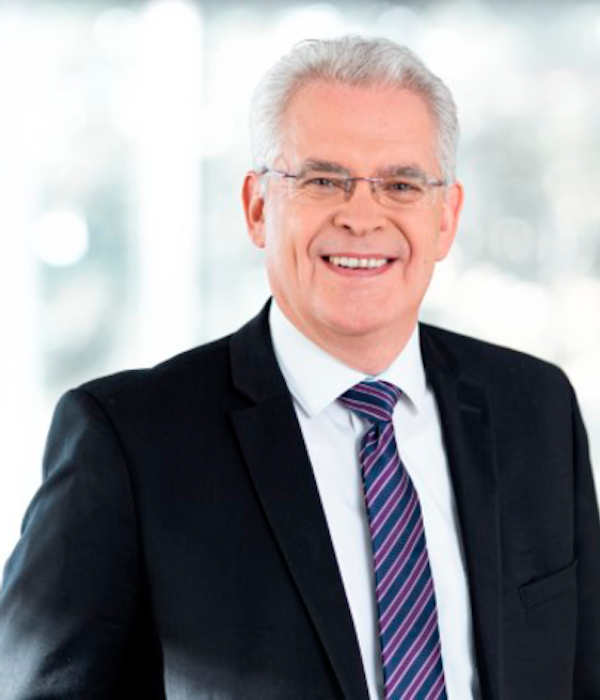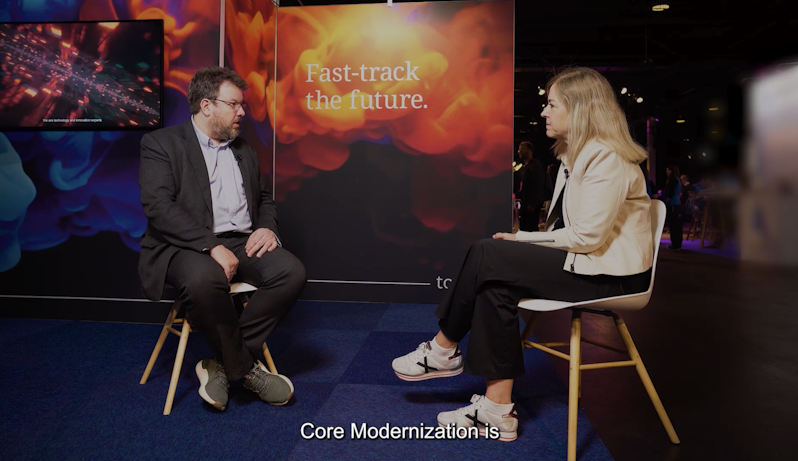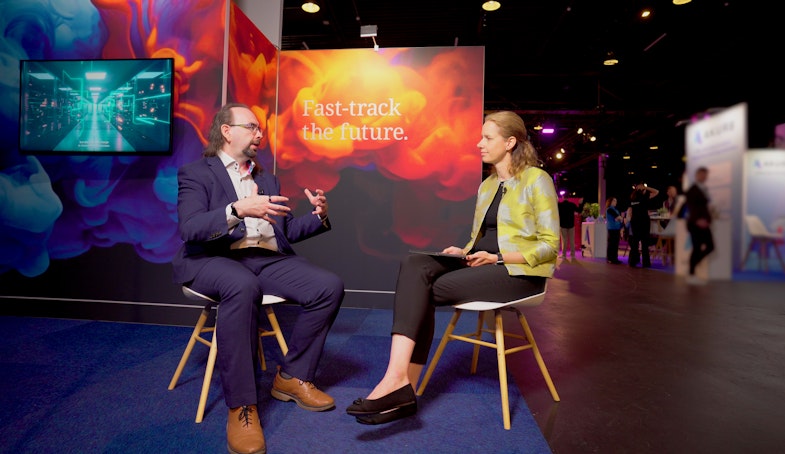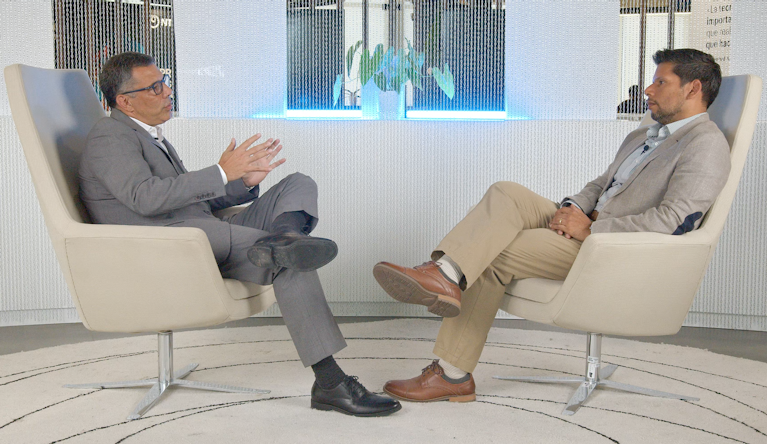
Decoding the challenges of the Reinsurance industry with R+V Re
Christian Heymann, Head of Reinsurance at NTT DATA EMEAL and Dr. Matthias Maneth-Desrochers, Director / Head of Financial Department at R+V Re, discuss challenges in the insurance industry, with a focus on R+V Re. The conversation focuses on the importance of being a learning organization, economic factors affecting reinsurance, the war for talent or some successful use cases for R+V Re.
Speakers
Christian Heymann
Head of Reinsurance at NTT DATA Insurance EMEAL
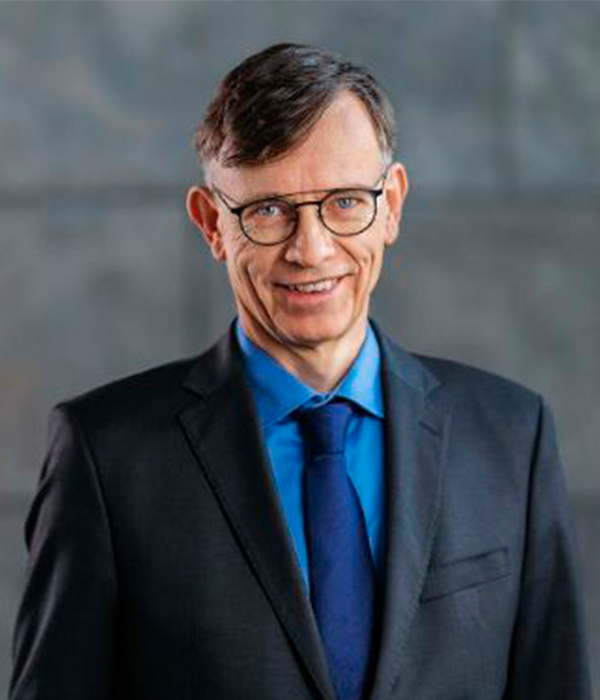
Dr. Matthias Maneth-Desrochers
Director / Head of Financial Department at R+V Re
Dr. Matthias Maneth-Desrochers
Director / Head of Financial Department at R+V Re
Transcription
Welcome to Insurance Dialogs. Today we have Dr. Maneth-Desrochers with us, the Head of the Reinsurance Financial Department at R+V Re. Matthias, thank you very much for finding the time to come to us today.
Gladly, Christian. I am sure we'll have a lot of fun today.
Fine. Matthias, would you like to tell us something about your position at R+V Re as Head of the Financial Department?
Gladly.I am from my background mathematician and am responsible for the management of the financial department, in which we have bundled IT, balance sheet, reporting and risk management, as well as all of the IT projects that are intended to further develop our department. And one of them that we want to talk about today is Delphin IT.
Thanks. Is there something in your area that your heart is particularly attached to? What is special important to you?
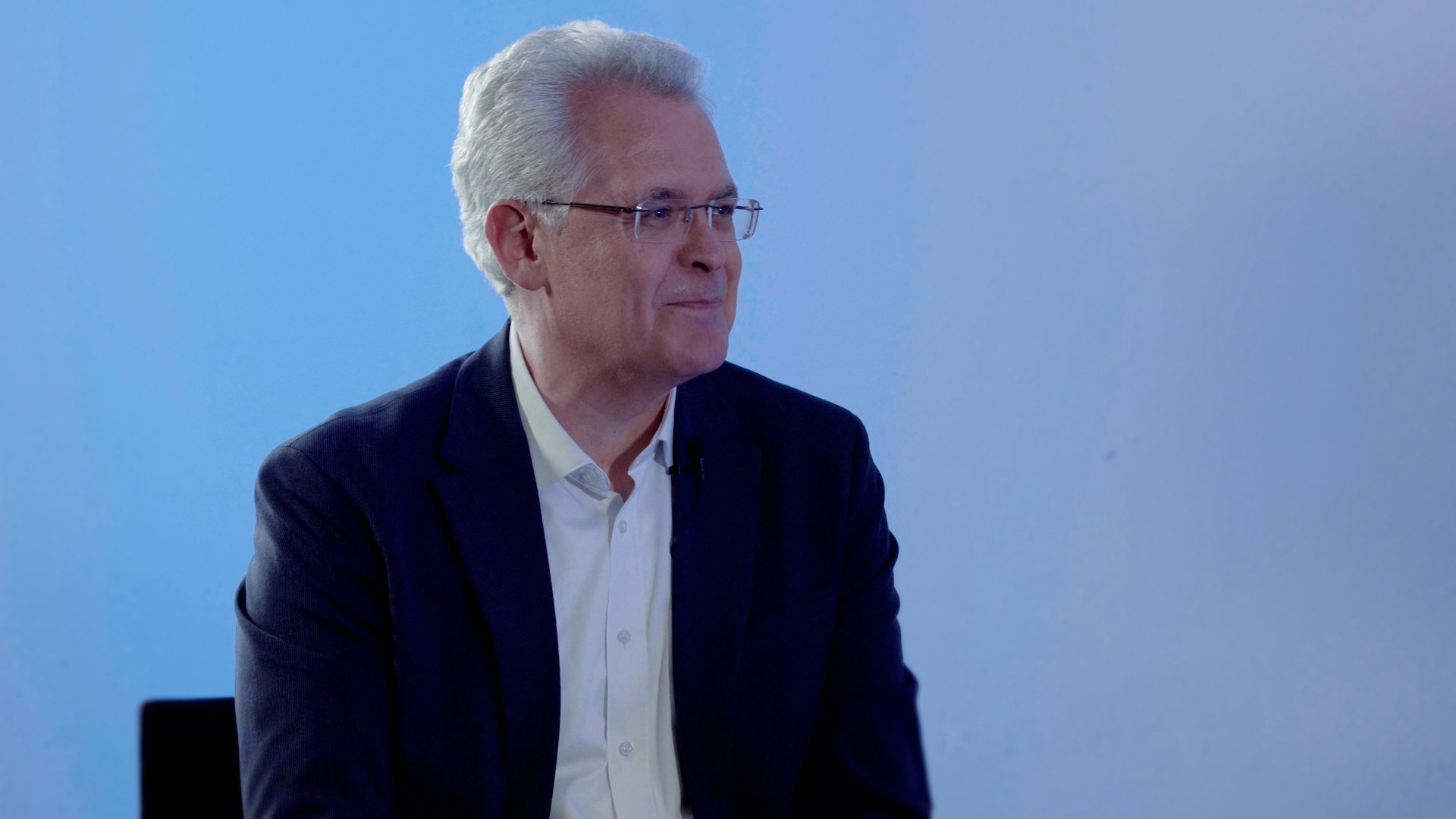
It is particularly important that R+V Re is a learning organization. That is special important to me. When I look back on 30 years of professional life, I see how much has changed, what's always new and especially in the last few years with all the regulations of Solvency 2 or IFRS 17. So, we always have to learn something new. And now, with the agile transformation at R+V, we are also getting very involved in agile software development in IT.
Thanks. If you now take a general look at the overall market for reinsurance, then you have a lot of complexity in the market at the moment. Well, when I think of the progressing climate change, when I think of the large individual loss events, such as Hurricane Ian in Florida last year, which was quite possibly a record loss in total of $ 60 billion. If I also factor in the high inflation rates of 7, 8, 9% in the large industrialized countries and finally consider the issue of the war for talents, i.e. the fight for the most talented employees. What do you currently see as the challenge for R+V Re, especially in this area?
Gladly. You have already listed many important points. Of course, we move in the VUCA world. In concrete terms, one can say that yes, things are changing as a result of the Russia-Ukraine war, inflation and rising interest rate curves. You can tell the whole arithmetic, the financials, has changed, and of course that's a big challenge for us. On the other hand, the market has become more tough, the reinsurance market is really starting to make money again.
And that's very good. And I think those are two crucial factors, the fact that the market is getting more tougher, it's changing a lot and you still have all the economic influencing factors. Those are big challenges for us.
How do you perceive the war for talents as R+V? Is that an issue for you in general or do you say we always get the best minds for R+V or is it always a difficult battle on the market?
War for Talents is a big issue. But the R+V has a few advantages. We are a large local employer and we are part of a very strong local structure, like the Rhine-Main region, with many universities, many
high potentials and not all of them want to go to consultant firms. And we are attractive for them. We offer excellent working conditions, an excellent team and a learning organization.
A lot of young people feel, that they are in very good hands, well supported and also well challenged.
Thank you very much. If you now look at IT transformation in general, you have already addressed the topic, so of course R+V Re this has been an important topic for you in recent years. You have put a lot of time and effort into modernizing your IT landscape for reinsurance. Delphin IT is the keyword here. What were the major challenges in this area, about which you would say, that was our starting situation, that's what we wanted to achieve as a goal?
Delphin IT is a project that has now gone on for nearly eleven years. We had started with preliminary studies, and the challenge was that we had a large host system, where we could only run evaluations overnight and it was very difficult to change processes. And so we asked ourselves, how could we modernize reinsurance without having a modern system? And this was the starting point for thinking about new architecture studies, and in 2011 we started this project and said: yes, we will completely replace the host system with a client-server architecture.

And additionally all of this in an agile IT development model.
So, at the beginning, in the first phase, we were still on the road with Waterfall model and also had a work contract situation there. But that has brought some great challenges, it must be said clearly. Well, we've already noticed how well the technical concepts are actually fitting for implementation, how many change requests there are. And you need of course a good partner with whom you can master these challenges together.
In the second phase, we became more agile and found another working model with NTT DATA and got into agile software development. We designed the contract for work differently and always had a very good communication platform in common there, so that we could discuss and solve the challenges that, despite everything, are pending, arise, or suddenly arise, regardless of which method is used.
Now it is not a matter of course that such an individual development is actually enthusiastically implemented successfully in this form, at R+V Re and of course for the market. What were the success factors that you now see where you say that made the extra point of success again.
If you look at it over the ten or eleven years, we naturally asked ourselves: do you want to use SAP FS-RI as standard software or do you want to use your own solution or another standard software, of one of the different providers? And we decided against it because we said we want to customize our processes to be absolutely perfect for us. And we wanted to save on license costs.
Well, that was the first economic drive. And then, a second success factor is, of course, that with NTT DATA you have a good partner with whom you can successfully design a project like this over a long period of time, because there are challenges for both sides. You can't write everything down, you can't predict everything. Such a system also contains a lot of functionality, which perhaps is not so well known to everyone, but which then still has to be replaced for such a subledger, and that's it.
And the third success factor is clearly a very stable team. I myself have accompanied the project as the responsible client for more than eleven years in my role. We have an excellent internal team that has grown, developed, learned a lot. And that is also a very important success factor.
Thank you very much. This mixed approach, which has an onsite team on the one side and a nearshore team on the other. How did you perceive that? Was that an advantage? Was that a clear cost aspect for you?
That was a very interesting aspect. We still had relatively little experience with nearshore and also asked ourselves the question: how can we manage the interaction? And luckily we were able to leave this responsibility in your hands, so that we had an onshore team and you had an offshore team. And that is of course an advantage in the cost structure for such a large project, especially when you replace it peu a peu.
And you have to say that we at R+V Re have almost 500 employees today. Ten years ago we had far fewer employees. And you have to see, it also took us so long because we said we couldn't put more resources into the project and you need a continuous partner who takes over certain roles, functions and tasks.
Would you also say in general that the nearshore development topic, maybe even offshore in the future, could be very interesting for R+V? We had already talked about Vietnam, India and our experiences of preparing, implementing and running such a transition with offshore. Of course, as your partner, we have a lot of experience in this topic. Would that also be an additional approach for R+V Re in the future?
Well, we're always thinking about how to save costs, and we're one of the cost leaders in the non-life reinsurance market. And if you want to keep an cost ratio of 3 to 4%, more in the direction of under 3%, then of course you have to think about such approaches.
Thank you very much. Let´s talk about your focus topics currently and in the future? What do you think about the topic of cloud and beyond in IT transition. Have you already thought about the next step according to cloud and cloudification of the systems?
I think, talking about Delphin IT, one of the first really big projects I started, we have of course come a long way since then. That means we have evolved from host architectures, through client-server architectures, now to cloud-native stack architectures for all modern applications and all changes and transformations from older applications go into the modern cloud computing environment
And of course NTT Data is a very good strategic partner for you on this topic. Data driven insurance, especially in reinsurance. We talked about this topic according simulation models to be able to predict future events, in the event of NATCAT, climate change, etc. Big data is as well a big topic for R+V Re, I would suppose?
It's a topic. It may not be as big as you think, but of course climate models for predicting NATCAT, i.e. natural disaster risks, is a very central topic. You can see how the losses caused by natural disasters has grown over the last few decades and, of course, due to climate change, everything that is by the sea, what is near the coast, in the concentration of values, is more at risk and we have to deal with the issue so that insurability is possible further on.
Now, of course, we also have the topic of green generation and sustainability, as the saying goes. Is that an important topic for you overall in the context of reinsurance?
This is a central topic at R+V in general. We have already supported a number of initiatives and, as a company, we have committed ourselves to them. And R+V sees that as an overall topic for all of us. This also applies to the entire next generation, the generation after next, so helping to stop climate change is a central aspect of R+V's overall strategy.
Thanks. You can already see, that on the market, reinsurers are also mutating from pure risk carriers to service providers. Meaning taking over many of the services of a reinsurance broker in terms of the analysis function, but also offering additional services and applications. We had already talked about the subject before, and you said that R+V Re might be still too small, but in the future it might be an interesting goal to make such apps available to primary insurers as a service?
I don't think we're already in a market position where it's worth deeper thinking about. Well, we have such good contacts with our market here and I think digital data exchange is the level where we want to make progress. Of course, we also provide our customers with services in pricing and claims services to support them. But we're still among the top 20 reinsurers, are medium-sized, and we'll continue to develop there.
But I don't think that's quite our playing field yet.
Matthias, let's take a closer look at the Delphin IT project, what were the problems there that we were able to solve together or you were able to solve on your own. How did you tackle it?
Perhaps first of all a small description of the Delphin IT project. It has five main topics. We have replaced a contract administration system, a large billing module. We have replaced all the reports, meaning the Business Intelligence module. We also brought in cash flow patterns and we also replaced the entire receivables management. Well, we had very different parts that we played there and the challenge was of course on the one hand replacing the modules in the right order, mastering the dependency structures and then also seeing how you can keep the old system running while in parallel a part of the new system is already running.
Were you able to solve the problems on your own or did you need support, also from a consultant firm?
Well, we still wrote the concepts on our own, but then we said very clearly, we'll need an outside-in opinion, that someone will look at it again, do you still see problems in the dependency structures? Are there perhaps problems in programming, testing and set up the transactions. Do the interfaces fit? And then we had to have many concepts to be quality assured.
Was it a big mind change for you to switch to the new agile development approach, or do you say that it actually fits in perfectly with R+V Re?
At the beginning it was definitely a mind change, because of course the colleagues were used to writing down all their requirements in detail, right down to the end. So, and now of course we proceeded in a completely different way. The new terms, such as Epics, Features, User Story, first of all many new English terms. Stand-ups, also a completely new approach. And that is a challenge at first.
So, the colleagues had to learn new things, so we trained them further, sent them to seminars and let them work with you. That worked itself out, but it was exhausting for many at first.
Great, then I'd like to say congratulations again that it was actually implemented so successfully. Fully customized for your needs in R+V Re. Will you be more on the „make“ side in the future or would you say we might buy one or two things?
The replacement of the host system is a great success for our entire team. Many have worked on it and now we are very proud that we have replaced the host system. In the future we will always make new decisions about make or buy. We also already use standard software and there is always the question of how much do I have to customize, how accurate is it and how expensive is it?
So, this basic question will come up again and again.
Matthias, thank you very much for the interview. That was our Insurance Dialog. I think we got very deep insights into successful projects being implemented. Thank you for that! And I'll just say: we'll see each other at R+V Re very soon.
Thanks for the invite, Christian!
You are very welcome and have a nice day. Great, you too.
